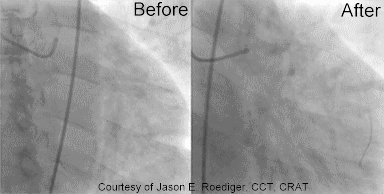Wellens' syndrome
|
WikiDoc Resources for Wellens' syndrome |
|
Articles |
|---|
|
Most recent articles on Wellens' syndrome Most cited articles on Wellens' syndrome |
|
Media |
|
Powerpoint slides on Wellens' syndrome |
|
Evidence Based Medicine |
|
Cochrane Collaboration on Wellens' syndrome |
|
Clinical Trials |
|
Ongoing Trials on Wellens' syndrome at Clinical Trials.gov Trial results on Wellens' syndrome Clinical Trials on Wellens' syndrome at Google
|
|
Guidelines / Policies / Govt |
|
US National Guidelines Clearinghouse on Wellens' syndrome NICE Guidance on Wellens' syndrome
|
|
Books |
|
News |
|
Commentary |
|
Definitions |
|
Patient Resources / Community |
|
Patient resources on Wellens' syndrome Discussion groups on Wellens' syndrome Patient Handouts on Wellens' syndrome Directions to Hospitals Treating Wellens' syndrome Risk calculators and risk factors for Wellens' syndrome
|
|
Healthcare Provider Resources |
|
Causes & Risk Factors for Wellens' syndrome |
|
Continuing Medical Education (CME) |
|
International |
|
|
|
Business |
|
Experimental / Informatics |
Editor-In-Chief: C. Michael Gibson, M.S., M.D. [1]
Synonyms and keywords: Wellen's syndrome; Wellen's Ts; Wellen's T waves; Wellen's sign; Wellens' Ts; Wellens' T waves; Wellens' sign; Wellen syndrome; Wellen Ts; Wellen T waves; Wellen sign
Overview
Wellens' syndrome (or sign, or occasionally warning) is an electrocardiographic manifestation of critical proximal left anterior descending (LAD) coronary artery stenosis in patients with unstable angina. It is characterized by symmetrical, often deep >2mm, T wave inversions in the anterior precordial leads. A less common variant is biphasic T wave inversions in the same leads.[1]
Historical Perspective
The syndrome was first described by Hein J. J. Wellens and colleagues in 1982 in a subgroup of patients with unstable angina.[2]
Causes
Wellens' syndrome is associated with atherothrombotic occlusion of the left anterior descending artery. Wellens' sign has also been seen as a rare presentation of Takotsubo or stress cardiomyopathy.
Epidemiology and Demographics
The syndrome is present in 16% of patients in the orginal description [3] and in 14% of patients at presentation in a prospective study and in 60% of patients within the first 24 hours.[4]
Natural History, Prognosis and Complications
The presence of Wellens' syndrome carries significant diagnostic and prognostic value. All patients in the De Zwann's study with characteristic findings had more than 50% stenosis of the left anterior descending artery (mean=85% stenosis) with complete or near-complete occlusion in 59%. In the original Wellens' study group 75% of those with the typical syndrome manifestations had an anterior myocardial infarction. Sensitivity and specificity for significant (more or equal to 70%) stenosis of the LAD artery was found to be 69% and 89% respectively with positive predictive value 86%.[5]
Diagnosis
Electrocardiographic Criteria
- Progressive symmetrical deep T wave inversion in leads V2 and V3
- The slope of the inverted T waves is generally at 60°-90°
- There is little or no cardiac marker elevation
- There is discrete or there is no ST segment elevation
- There is no loss of precordial R waves
Electrocardiographic Examples

Shown above is the EKG of a 69-year-old black male with Wellens' sign.

Shown above is a coronary angiogram showing a tight, critical stenosis in the proximal left anterior descending coronary artery (left); After placement of a bare-metal stent (right). Wellens' warning.

Shown above is the EKG of a patient with Wellens' sign during an episode of chest pain.

Shown above is the EKG of the same patient after the episode of chest pain had resolved. Despite resolution of the chest pain, note the persistent biphasic T waves in leads V2 and V3.
References
- ↑ Tandy, TK (1999). "Wellens' syndrome". Annals of Emergency Medicine. 33 (3): 347–351. doi:10.1016/S0196-0644(99)70373-2. PMID 10036351. Unknown parameter
|month=ignored (help); Unknown parameter|coauthors=ignored (help) - ↑ de Zwaan, C (1982). "Characteristic electrocardiographic pattern indicating a critical stenosis high in left anterior descending coronary artery in patients admitted because of impending myocardial infarction". American Heart Journal. 103 (4): 730–736. doi:10.1016/0002-8703(82)90480-X. PMID 6121481. Unknown parameter
|month=ignored (help); Unknown parameter|coauthors=ignored (help) - ↑ de Zwaan, C (1982). "Characteristic electrocardiographic pattern indicating a critical stenosis high in left anterior descending coronary artery in patients admitted because of impending myocardial infarction". American Heart Journal. 103 (4): 730–736. doi:10.1016/0002-8703(82)90480-X. PMID 6121481. Unknown parameter
|month=ignored (help); Unknown parameter|coauthors=ignored (help) - ↑ de Zwaan, C (1989). "Angiographic and clinical characteristics of patients with unstable angina showing an ECG pattern indicating critical narrowing of the proximal LAD coronary artery". American Heart Journal. 117 (3): 657–665. doi:10.1016/0002-8703(89)90742-4. PMID 2784024. Unknown parameter
|month=ignored (help); Unknown parameter|coauthors=ignored (help) - ↑ Haines, DE (1983). "Anatomic and prognostic significance of new T-wave inversion in unstable angina". American Journal of Cardiology. 52 (1): 14–18. doi:10.1016/0002-9149(83)90061-9. PMID 6602539. Unknown parameter
|month=ignored (help); Unknown parameter|coauthors=ignored (help)